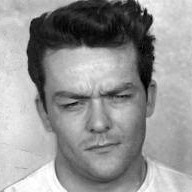
1945 - 1975
Richard Blass
Summary
Name:
Richard BlassNickname:
Le Chat (The Cat)Years Active:
1968 - 1975Birth:
October 24, 1945Status:
DeceasedClass:
MurdererVictims:
15Method:
Shooting / ArsonDeath:
January 24, 1975Nationality:
Canada
1945 - 1975
Richard Blass
Summary: Murderer
Name:
Richard BlassNickname:
Le Chat (The Cat)Status:
DeceasedVictims:
15Method:
Shooting / ArsonNationality:
CanadaBirth:
October 24, 1945Death:
January 24, 1975Years Active:
1968 - 1975bio
Richard Blass was born on October 24, 1945, in the Rosemont neighborhood of Montreal, Quebec. As a young boy, he struggled with anger and aggression, which eventually led him to amateur boxing as an outlet. But even within the ring, his temper often boiled over. After losing a match to fellow boxer Michel Gouin, Blass stabbed him with a knife—his first known violent crime. He pled guilty to assault and spent just one night in jail. That moment was a signal flare of the violence to come.
Over time, Blass grew deeply fascinated by organized crime, especially the Mafia power structure operating out of New York. Despite his obsession, he harbored an intense hatred for the Italian Mafia that dominated Montreal's criminal underworld during the 1960s. This deep resentment led him into open warfare with Mafia families linked to Frank Cotroni and the Di Maulo brothers. His hatred wasn’t just ideological—he turned it into a personal crusade. He reportedly carried out hits for the West End Gang and built his own violent faction.
Blass became known for his uncanny ability to survive assassination attempts—earning him the nickname Le Chat, or The Cat. He survived a firebombing, multiple shootings, and a bar ambush, each time walking away from near-certain death. As he grew more reckless, his list of enemies—including police, informants, and rival gangs—also grew.
murder story
Richard Blass’s criminal saga began in blood and escalated quickly into full-on urban warfare. In May 1968, his feud with the Cotroni family exploded when he and Robert Allard ambushed Cotroni outside his home. Though Cotroni escaped, his two bodyguards were killed. Days later, retaliation came fast—three of Blass’s men were murdered in separate attacks. Blass responded by launching a string of brutal counterattacks that left several men dead, including Giuseppe Collizza, shot five times in the head, and Francesco Grado, a known Mafia loan shark.
In August 1968, two gunmen tried to assassinate Blass in a bar—but he survived. A few weeks later, another attempt was made by burning down a motel where he was hiding. Again, Blass escaped, though three others died in the blaze. That fall, he and partner Claude Ménard were shot and wounded by Joe Di Maulo. Blass took bullets to the head and back but survived yet again, refusing to name his attackers.
His first major prison sentence came in January 1969, after a botched bank robbery where he shot a police officer. He was sentenced to four consecutive 10-year terms. But even behind bars, Blass remained a threat. In October 1969, he and other inmates overpowered a guard and escaped from a prison van—only to be recaptured at his wife’s apartment after a tip-off.
In 1974, he escaped once more with help from a female accomplice who smuggled in guns. After breaking out, Blass began hunting down former associates who had testified against him. On October 30, 1974, he located and murdered two former accomplices, Raymond Laurin and Roger Lévesque, in cold blood at a bar.
Fearing more witnesses could be a threat, Blass escalated to mass murder. On January 21, 1975, he and Fernand Beaudet returned to the same bar, locked 13 people in a storage room—including three women—and gunned them down. The killings shocked the nation.
A massive manhunt ensued. Just three days later, on January 24, 1975, police tracked Blass to a chalet in Val-David, Quebec. At 1:30 AM, officers broke in. What happened next is still debated. Police claimed Blass fired first, but later, one of the arresting officers, Albert Lisacek, told a journalist in 2012 that Blass had only been holding a sock. Regardless, Blass was hit by 27 bullets and died on the spot.
He was buried at the Notre Dame des Neiges Cemetery in Montreal. His criminal career ended in a hail of bullets, but his legend—as one of Montreal’s most violent and elusive gangsters—lives on in books, films, and crime history.